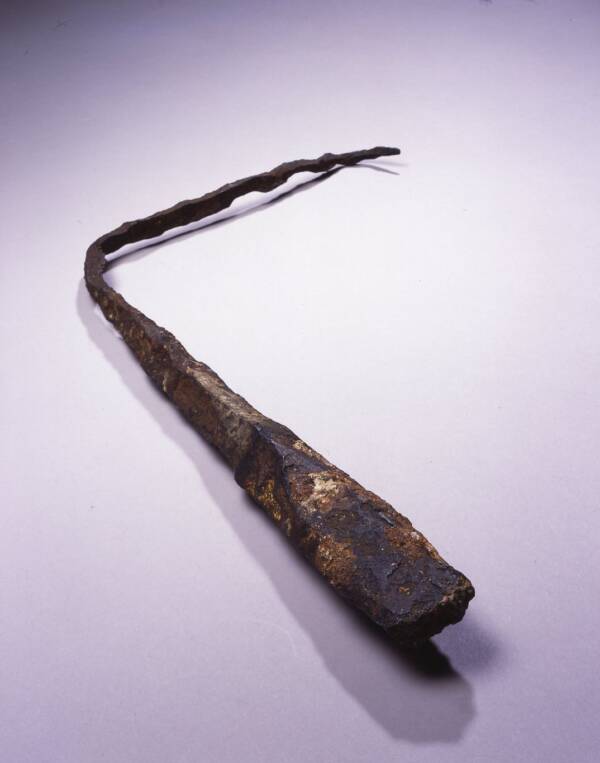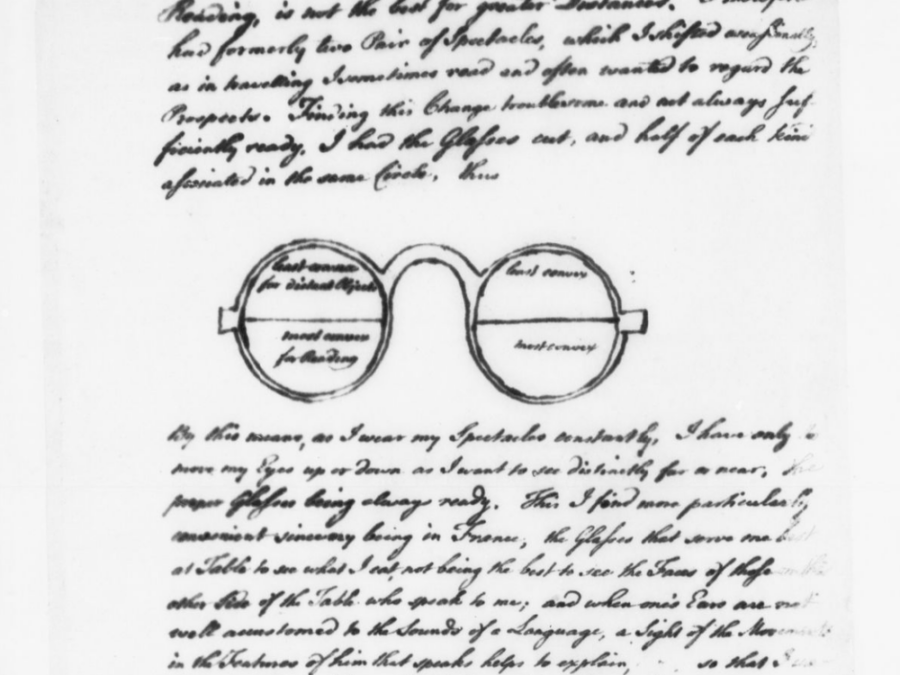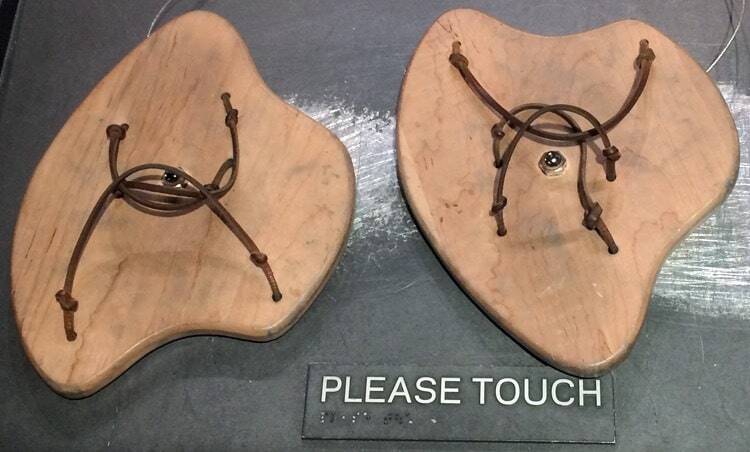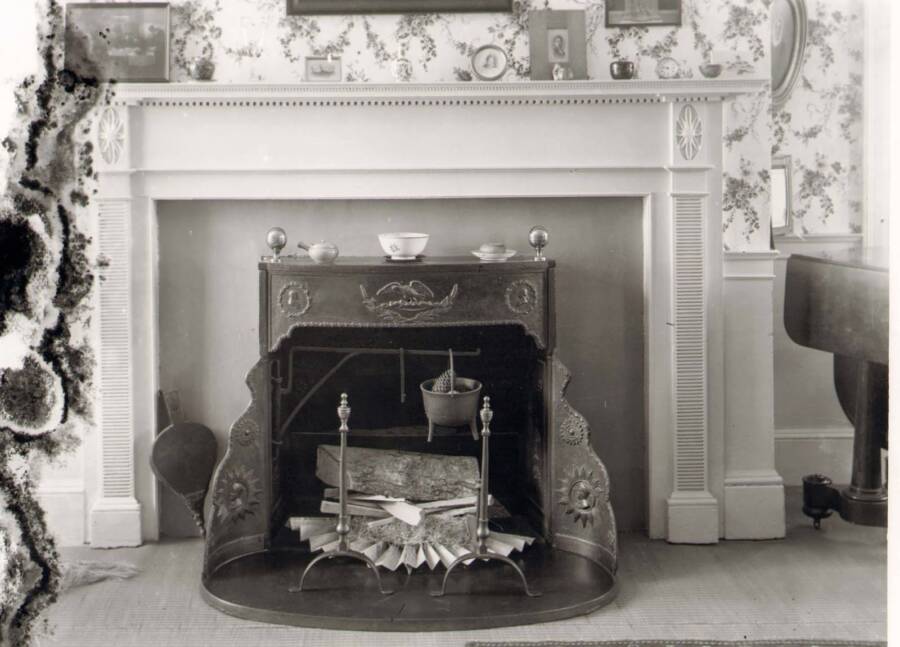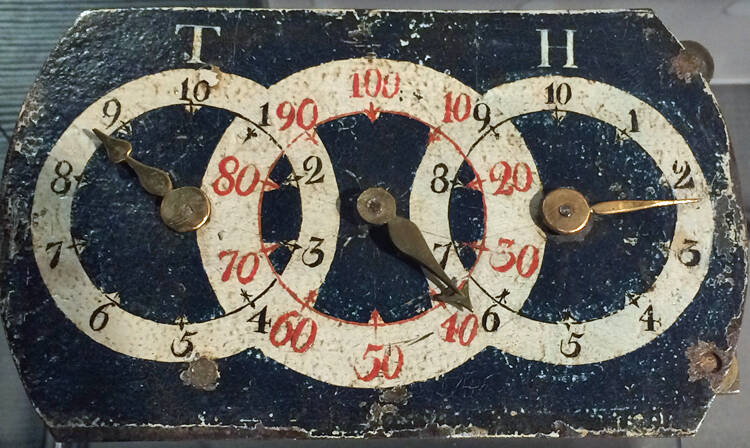A brilliant polymath, Benjamin Franklin was just 11 years old when he became an inventor — and he went on to create a wealth of innovative devices that would change America forever.
Benjamin Franklin was many things. He was a statesman, a newspaper publisher, and one of the architects of the American Revolution. But at his core, Franklin was an inventor. His remarkable mind never seemed to stop, as these 10 Benjamin Franklin inventions more than prove.
Born on January 17, 1706, in Boston, Massachusetts, Franklin put his keen mind to use at a young age. Though he had to drop out of school at age 10 to help his father's failing candle and soap shop, he used any free time he had to devour books. And at the age of 11, Franklin came up with one of his first inventions: wooden swim fins in order to swim faster.
Unlike today's swim fins, which swimmers attach to their feet, the 11-year-old Franklin attached his swim fins to his hands.
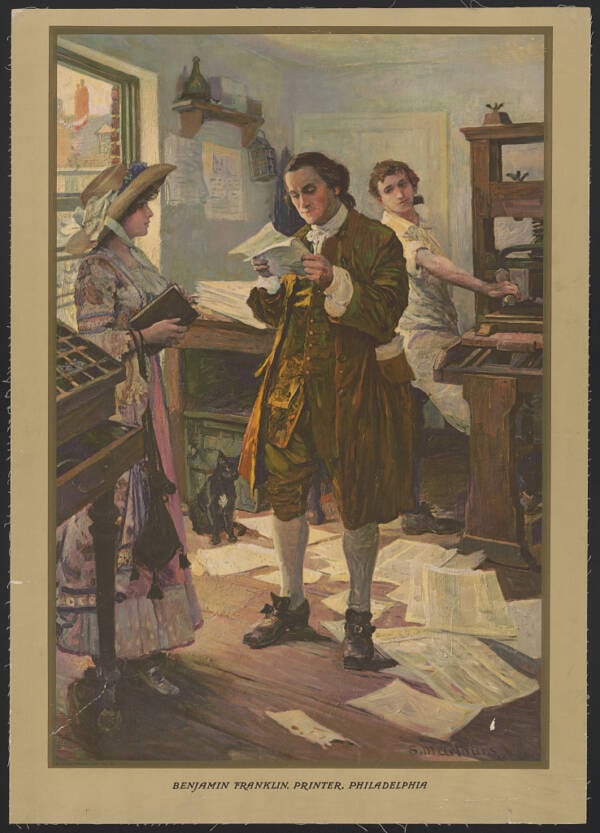
Library of CongressBenjamin Franklin as a young man, when he worked as a printer.
"I made two oval [palettes] each about 10 inches long and six broad, with a hole for the thumb in order to retain it fast in the palm of my hand," Franklin later wrote in his essay, On The Art Of Swimming. "They much resembled a painter's [palettes]. In swimming, I pushed the edges of these forward and I struck the water with their flat surfaces as I drew them back. I remember I swam faster by means of these [palettes], but they fatigued my wrists."
As he grew older, Benjamin Franklin's proclivity for inventions increased. A man of many talents — and many pastimes — Franklin invented a soup bowl that could not spill, a musical instrument called the glass armonica, a reaching device to snag books on high shelves, and even bifocal glasses.
A voracious reader suffering from both nearsightedness and farsightedness, Franklin grew tired of having to constantly switch his spectacles. So, he invented what he called "double spectacles." As the Smithsonian's National Museum of American History writes, Franklin cut the lenses of two pairs of spectacles and placed "half of each kind associated in the same Circle."

The Franklin InstituteBenjamin Franklin's invention of bifocals was — like many of his inventions — a solution to one of his own problems.
"Eyes up or down, as I want to see distinctly far or near," Franklin noted. In a letter to his friend George Whatley, Franklin happily reported that his "double spectacles" made his eyes as "useful to me as ever they were."
But perhaps the most famous Benjamin Franklin invention is the lightning rod, which he dreamed up around 1752.
Then, lightning was a grave danger to towns across the world. Churches were especially at risk, as they were often the highest building around. It just so happened that Franklin was fascinated by lightning.
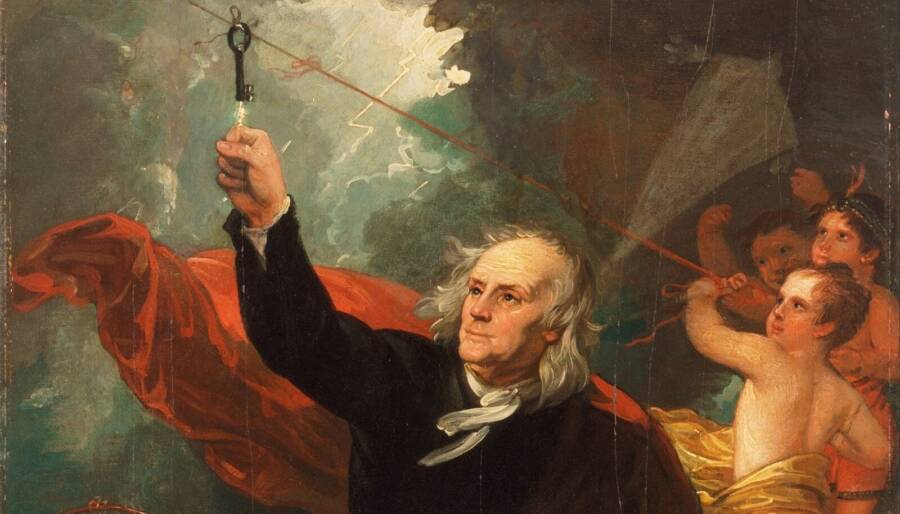
Philadelphia Museum of ArtBenjamin Franklin famously used a key to prove that lightning was electrical.
In 1752, Benjamin Franklin had determined that lightning was electrical with his famous kite experiment. Then, he attached a metal key to a kite and observed the electrical charge that came down from the stormy sky. Of course, he didn't invent electricity, but Franklin did make a crucial observation about lightning.
And with this knowledge in hand, Benjamin Franklin invented the lightning rod. He hypothesized that placing an iron rod on buildings could protect them from destructive lightning strikes during storms.
"May not the knowledge of this power of points be of use to mankind, in preserving houses, churches, ships, etc., from the stroke of lightning, by directing us to fix, on the highest parts of those edifices, upright rods of iron made sharp as a needle," he mused, according to the Franklin Institute.
"Would not these pointed rods probably draw the electrical fire silently out of a cloud before it came nigh enough to strike, and thereby secure us from that most sudden and terrible mischief!"
After he installed a lightning rod on his own house in Philadelphia, others quickly followed on both sides of the Atlantic. According to the Constitution Center, even King George III had a lightning rod installed.
During his life, Franklin wore many hats. But nothing quite demonstrates the depth of his mind as Benjamin Franklin's inventions.
After reading about Benjamin Franklin's inventions, enjoy some of Benjamin Franklin's best quotes. Or, look through these accidental inventions that changed the world.
